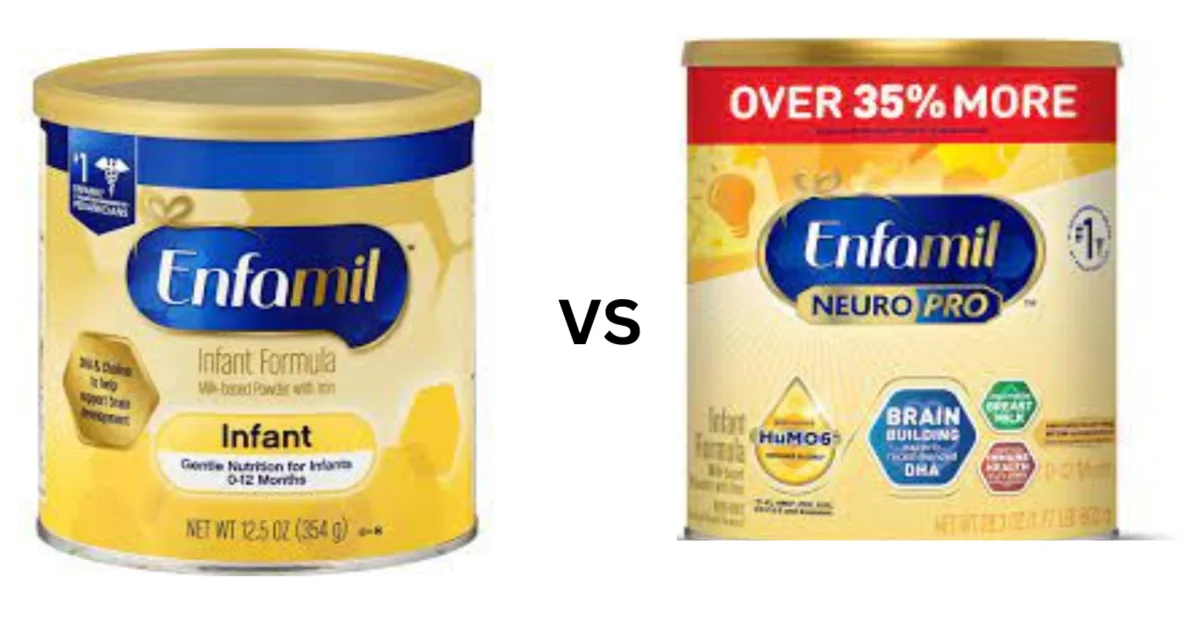Dr. Brown’s bottles have long been recognized as a trusted and popular choice among parents seeking high-quality feeding solutions for their babies. One of the distinctive features of Dr. Brown’s bottles is the availability of different colored options, particularly the blue and green varieties. These bottles not only offer a visually appealing aesthetic but also provide practical benefits for both babies and caregivers.
The blue and green Dr. Brown’s bottles share many similarities, as they both incorporate the patented venting system that has made the brand renowned. This venting system helps reduce colic, burping, and gas by preventing air bubbles from mixing with the milk or formula. This innovative design ensures a more comfortable feeding experience for babies, minimizing the common feeding issues that can cause discomfort.
About Dr. Browns Blue Bottle
Dr. Brown’s Blue Bottle is a highly regarded feeding solution for infants that combines innovative design with practical functionality. The blue color of these bottles is visually appealing and a distinguishing feature within Dr. Brown’s bottle range.

One of the key features of Dr. Brown’s Blue Bottle is its incorporation of the patented venting system, which sets it apart from traditional baby bottles. This venting system effectively reduces colic, burping, and gas by preventing the ingestion of air bubbles during feeding. By minimizing air intake, these bottles help alleviate common feeding issues and discomfort, promoting a more enjoyable feeding experience for babies.
Dr. Brown’s Blue Bottle is part of the Options+™ line, offering parents the flexibility to adapt the bottle’s venting system to meet their baby’s changing needs. This line is particularly beneficial for babies transitioning from breastfeeding to bottle feeding, as it provides an adjustable venting mechanism. Parents can choose to use the bottle with the vent system to reduce feeding problems, or they can remove the vent to create a nipple-vented bottle for a more free-flowing experience.
One notable advantage of the blue Dr. Brown’s bottles is their ability to help preserve essential nutrients in breast milk or formula. The venting system works to minimize oxidation, which can affect sensitive nutrients like vitamins C, A, and E. By reducing the amount of air that comes into contact with the milk or formula, these bottles contribute to maintaining the nutritional value of the feed.
Dr. Brown’s Blue Bottles are available in various sizes, allowing parents to choose the most suitable option for their baby’s feeding needs. The bottles are made from high-quality, BPA-free materials, ensuring the safety and well-being of the child.
Overall, Dr. Brown’s Blue Bottle offers an excellent combination of functionality, versatility, and aesthetics. Its unique venting system, adjustable features, and focus on preserving nutritional content make it a trusted choice for parents who want to provide their babies with a comfortable and healthy feeding experience.
Dr. Brown’s Blue Bottle, like any product, has its own set of advantages and disadvantages. Let’s explore some of the pros and cons associated with this particular feeding bottle:
Pros:
Patented Venting System:
One of the standout features of Dr. Brown’s Blue Bottle is its patented venting system. This system helps reduce colic, burping, and gas by preventing the ingestion of air bubbles during feeding. It can contribute to a more comfortable feeding experience for babies and potentially alleviate common feeding issues.
Adjustable Venting Options:
The Options+™ line, to which the blue bottle belongs, offers the flexibility to adjust the venting system according to the baby’s needs. Parents can choose to use the vent system or remove it to create a nipple-vented bottle for a more free-flowing experience. This adaptability can be beneficial for babies transitioning from breastfeeding to bottle feeding or those with specific feeding challenges.
Nutrient Preservation:
The venting system in the blue bottle helps minimize oxidation, which can affect the nutritional content of breast milk or formula. By reducing the amount of air that comes into contact with the milk or formula, it can help preserve essential nutrients, such as vitamins C, A, and E.
Available in Various Sizes:
Dr. Brown’s Blue Bottle is available in different sizes, allowing parents to choose the most suitable option based on their baby’s feeding needs. This range of sizes provides flexibility and convenience for parents.
Cons:
Complex Assembly and Cleaning:
The venting system in Dr. Brown’s Blue Bottle consists of several parts, which can make assembly and cleaning a bit more time-consuming compared to traditional bottles. Parents need to ensure that all the components are properly cleaned and reassembled to maintain the functionality of the bottle.
Increased Number of Parts:
The venting system also means that Dr. Brown’s Blue Bottle has more parts compared to standard bottles. This may make it slightly more challenging to keep track of and potentially increase the risk of losing or misplacing some of the components.
Higher Cost:
Dr. Brown’s Blue Bottle tends to be priced slightly higher compared to some other baby bottles on the market. The additional features and benefits it offers, such as the venting system and nutrient preservation, contribute to its higher cost.
About Dr. Brown’s Green Bottles
Dr. Brown’s Green Bottles are highly regarded feeding solutions that cater to the specialized needs of infants facing feeding challenges. These bottles are designed to assist in the oral feeding development of babies with conditions such as cleft lip and palate, weak sucking, or other oral motor difficulties. With their unique features and collaboration with healthcare professionals, Dr. Brown’s Green Bottles provide a specialized feeding system for these infants.

One of the key advantages of Dr. Brown’s Green Bottles is their association with the Specialty Feeding System (SFS). This system is specifically designed to address the challenges faced by infants with specialized feeding requirements. The bottles incorporate a unique teat and valve system that promotes controlled flow, allowing these babies to feed at a pace that suits their needs. The controlled flow can help infants with weak sucking reflexes or difficulties in coordinating their feeding motions, making the feeding process more manageable and comfortable.
Dr. Brown’s Green Bottles are often used in collaboration with healthcare professionals who specialize in feeding issues. These professionals can provide guidance and support to parents in utilizing the Specialty Feeding System effectively. With their expertise, they can help ensure that infants receive the appropriate assistance and support in overcoming their feeding challenges.
Like other products from Dr. Brown, the Green Bottles are made from high-quality materials that are free from harmful substances such as BPA. This ensures the safety and well-being of infants during feeding. The bottles are designed to be durable and reliable, providing peace of mind to parents while using them.
It’s important to note that the application of Dr. Brown’s Green Bottles may be limited to infants with specific feeding challenges. For babies without these specific difficulties, green bottles may not provide any significant advantages over standard baby bottles. Therefore, it’s essential to consult with healthcare professionals or specialists to determine the most suitable feeding system for each individual baby.
Overall, Dr. Brown’s Green Bottles offer a specialized feeding solution for infants facing unique challenges. With their association with the Specialty Feeding System, collaboration with healthcare professionals, and commitment to safety and quality, these bottles provide parents with a reliable option to assist in the oral feeding development of their babies.
Dr. Brown’s Green Bottles, like any product, have their own set of advantages and disadvantages. Let’s explore some of the pros and cons associated with these particular feeding bottles:
Pros:
Specialty Feeding System (SFS):
Dr. Brown’s Green Bottles are associated with the Specialty Feeding System (SFS). This system is specifically designed for infants with feeding challenges, such as cleft lip and palate, weak sucking, or other oral motor difficulties. The unique teat and valve system in these bottles promote controlled flow and assist in proper oral feeding development, addressing the specialized feeding requirements of these infants.
Collaboration with Healthcare Professionals:
The green bottles are often used in collaboration with healthcare professionals who specialize in feeding issues. These professionals can provide guidance and support to parents in utilizing the Specialty Feeding System effectively, ensuring that infants receive the appropriate feeding assistance.
Controlled Flow:
The design of Dr. Brown’s Green Bottles helps regulate the flow of milk or formula. This can be particularly beneficial for infants who struggle with a weak or uncoordinated sucking reflex. The controlled flow can make feeding more manageable and comfortable for these babies.
BPA-Free and High-Quality Materials:
Dr. Brown’s Green Bottles, like other products from the brand, are made from high-quality materials that are free from harmful substances like BPA. This ensures the safety and well-being of infants during feeding.
Cons:
Limited Applicability:
The Specialty Feeding System (SFS) in Dr. Brown’s Green Bottles caters specifically to infants with feeding challenges. While this is a significant advantage for those who require it, it may not be suitable for babies without specific feeding difficulties. Therefore, the green bottles may have limited applicability for a broader range of infants.
Potentially Higher Cost:
Dr. Brown’s Green Bottles, with their specialized design and functionality, may be priced slightly higher compared to standard baby bottles. The additional features and benefits associated with the Specialty Feeding System contribute to their higher cost.
Extra Cleaning and Assembly:
Similar to other Dr. Brown’s bottles, the green bottles may require more intricate cleaning and assembly due to the presence of additional components. Parents need to ensure that all parts are properly cleaned and reassembled to maintain the functionality of the bottle.
When Choosing Between Dr. Brown’s Blue and Green Bottle, Consider the following Factors :
1. Feeding Needs:
Consider your baby’s specific feeding needs, such as colic or gas issues. Dr. Brown’s bottles, with their venting system, are designed to address these concerns, regardless of the bottle’s color.
2. Preferences:
If you or your baby have a color preference, that could influence your decision. Babies are known to respond to bright and contrasting colors, so you might consider which color your baby seems more interested in.
3. Complete Set:
Check if the set includes all the components you need, such as different nipple sizes and cleaning brushes. The specific components might differ between the blue and green sets.
4. Reviews:
Look for user reviews and feedback online to gauge the experiences of other parents who have used these bottles. However, keep in mind that individual experiences can vary widely.
5. Compatibility:
If you already have other Dr. Brown products, such as bottle accessories or storage options, ensure that the color of the bottle you choose complements your existing collection.
It’s important to note that the pros and cons mentioned above are based on general observations and feedback. The suitability and preference for Dr. Brown’s Green Bottles may vary depending on the specific needs of the baby and the guidance of healthcare professionals. It’s always recommended to consult with healthcare providers to determine the most appropriate feeding system for infants with specific challenges.
The Last Words
Finally, when it comes to the age-old debate of Dr. Brown’s bottles – blue vs. green – parents can breathe a sigh of relief as they make their choice. After meticulously weighing the merits of each option, considering the practical aspects and the potential impact on their little ones, the decision-making process comes to an end.
The blue and green Dr. Brown’s bottles have long captured the attention of parents, caregivers, and pediatricians alike. With their innovative venting system designed to reduce colic, gas, and reflux in infants, these bottles have revolutionized the way we feed our babies. Both variations offer the same essential features, ensuring that babies receive their nourishment without the discomfort that can accompany feeding.



